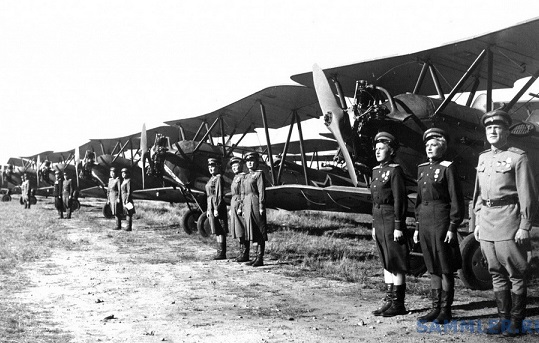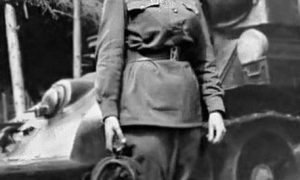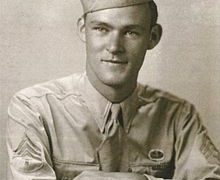“Night Witches” 46th Guards Night Bomber Aviation Regiment
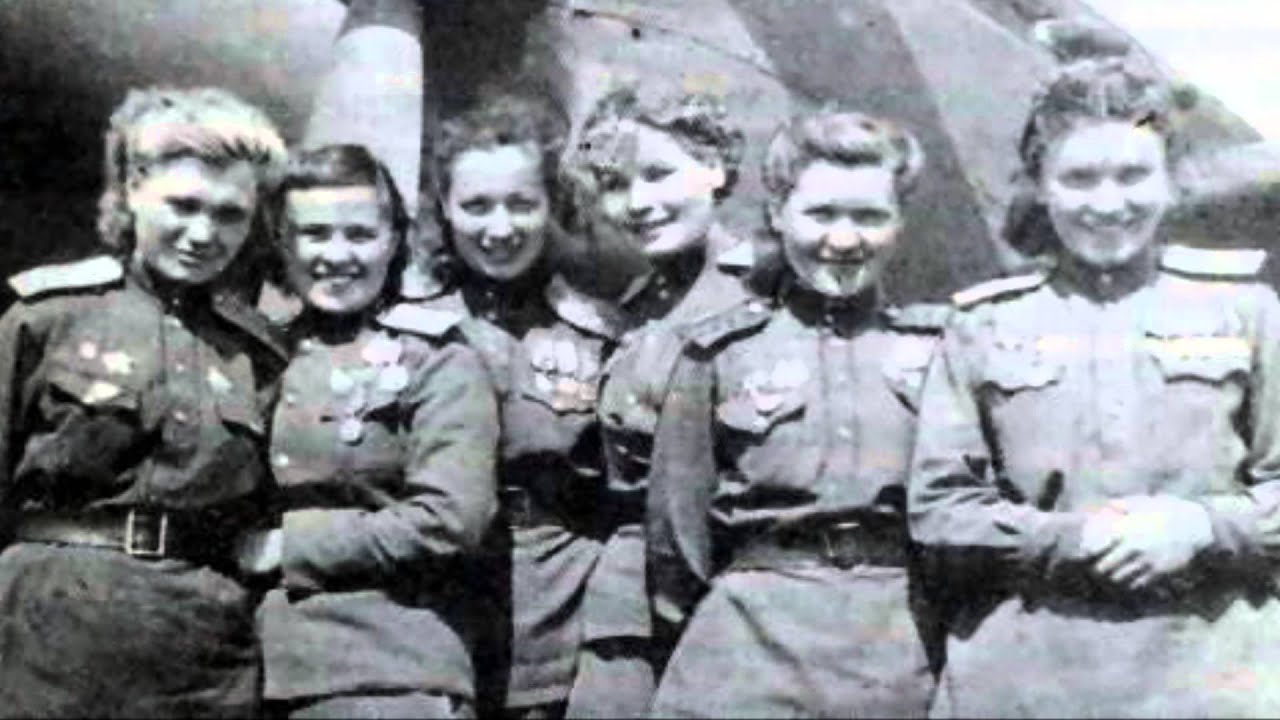
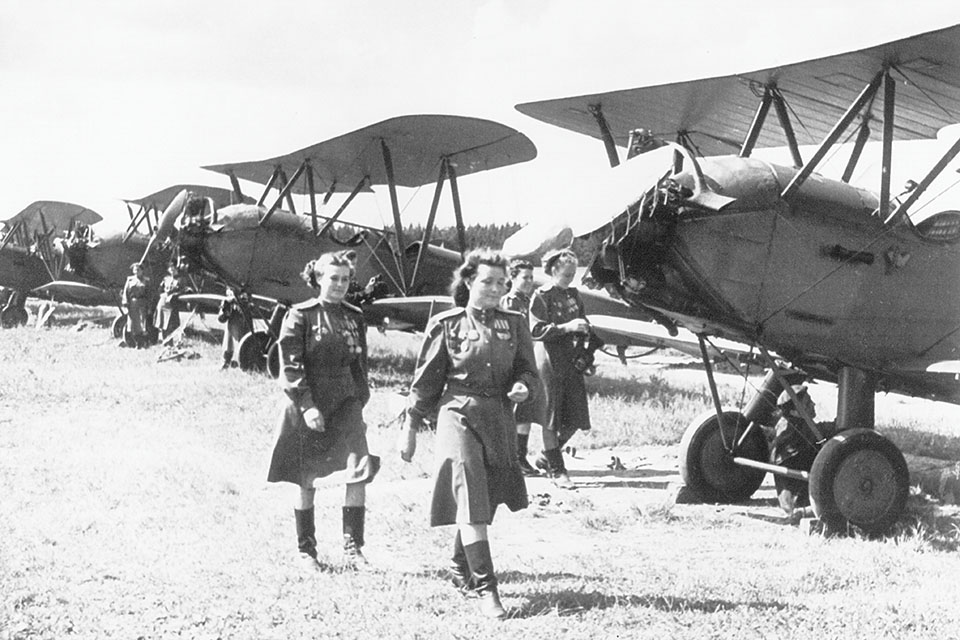
46th Guards Night Bomber Aviation Regiment
46th Guards Night Bomber Aviation Taman Red Banner and Order of Suvorov Regiment (46th Guards NBAP, until February 8, 1943 – 588th Night Light Bomber Aviation Regiment), also known as “night witches” – a female aviation regiment as part of the USSR Air Force during WW2.
Story
The aviation regiment was formed in October 1941 by order of the NPO of the USSR No. 0099, dated October 8, 1941, “On the Formation of Women’s Aviation Regiments of the Red Army Air Force” as the 588th Night Light Bomber Aviation Regiment. Supervised the formation of M. M. Raskov. Captain E. D. Bershanskaya, a pilot with ten years of experience, was appointed commander of the regiment. Under her command, the regiment fought until the end of the war. Sometimes he was jokingly called: “Dunkin Regiment”, with a hint of an all-female composition and justified by the name of the regiment commander. The party and political leadership of the regiment was headed by Maria Runt.
The formation, training and coordination of the regiment was carried out in the city of Engels. The air regiment differed from other formations in that it was completely female. Created according to the same order, two other women’s air regiments became mixed during the war, but the 588th air regiment remained completely female until it was disbanded: only women occupied all positions in the regiment from mechanics and technicians to navigators and pilots.
On May 23, 1942, the regiment flew to the front, where it arrived on May 27. Then its number was 115 people – most aged 17 to 22 years. The regiment became part of the 218th night bomber air division.
Air Marshal K. A. Vershinin :
“… We completed the formation of the association (Fourth Air Army) by May 22. And a few days later, the 588th Night Light Bomber Aviation Regiment, staffed by women, joined the army. The commander here was senior lieutenant E. D. Bershanskaya, the deputy for political affairs was battalion commissar E. Ya. Rachkevich, and the chief of staff was lieutenant I. V. Rakobolskaya. …
“Comrade commander,” the commander of the 218th division, Dmitry Dmitrievich Popov, called me, “I report: I received one hundred and twelve young ladies. And what will I do with them? – Annoyance slipped in Popov’s voice. “They are not young ladies, Dmitry, Dmitrievich, but full-fledged pilots,” I answered the colonel. – And how everyone will fight the enemy. Just do not immediately send them into hell, gradually commission them. For now, plan for them familiarization flights to the front line, let them study the combat area, get used to the front-line situation…. In the future, the division commander constantly informed me about the studies and military affairs of the women’s regiment. In early June, he again reported: “Today I was at a party meeting at Bershanskaya. Do you know, Comrade Commander, what decision they made? To work so that the regiment becomes one of the best in the army. – You see, and you said “young ladies”… They will show you what Soviet girls are capable of! After all, these are pupils of the Hero of the Soviet Union Marina Mikhailovna Raskova…. The regiment really quickly entered service, fought excellently, tirelessly improving the tactics of bombing at night, inflicting significant losses on the enemy. Subsequently, it was transformed into the 46th Guards. It is no coincidence that the captured Nazis called the Po-2 “night sergeant majors”: they constantly hung over the trenches and trenches, and there was nowhere to get away from them…. “. they constantly hung over the trenches and trenches, and there was nowhere to get away from them…. “. they constantly hung over the trenches and trenches, and there was nowhere to get away from them…. “.
– Vershinin K. A. The fourth air. – M.: Military Publishing, 1975
The first sortie took place on June 12, 1942.
“… On the night of June 9, the women’s regiment received its first baptism of fire. The division commander D.D. Popov and commissar A.S. Gorbunov came to see off the crews. The crews of E. D. Bershanskaya, squadron commanders S. Amosova and L. Olkhovskaya flew on a mission. They were to deliver a bombing strike on enemy manpower in the area of Snezhnoye and Nikiforovka. When approaching the target, enemy anti-aircraft guns fired at Bershanskaya’s plane. Maneuvering, she went to the intended point and dropped bombs from a height of 600 meters. Her example was followed by the crew of Amosova. At this time, anti-aircraft fire intensified. Several fragments hit Bershanskaya’s car, but the pilot was not at a loss and managed to get the plane out of the shelling. Amosova did the same. But the third crew was not lucky. During the bombing, L. Olkhovskaya and V. Tarasova were seriously injured and an emergency landing was made near the village of Krasny Luch. There, the locals buried the brave girls…. “.
– Vershinin K. A. The fourth air. – M.: Military Publishing, 1975
By order of the NPO of the USSR No. 64, dated February 8, 1943, for the courage and heroism of the personnel shown in battles with the Nazi invaders, the regiment was awarded the honorary title ” Guards “, a new number of forces and it was transformed into the 46th Guards Night bomber regiment. For some time, the chief of staff of the regiment was Fortus, Maria Alexandrovna, then – Rakobolskaya, Irina Vyacheslavovna.
In the period from July 11, 1943 to March 31, 1944, the regiment was part of the 132nd bomber aviation division, where it took part in the Crimean offensive operation.
Since May 15, 1944, it was part of the 325th night bomber air division.
During the liberation of Crimea in May 1944, the regiment was temporarily part of the 2nd Guards Night Bomber Air Division.
The Germans called them “Night Witches” because all sorties were exclusively night, and before diving into enemy positions, the pilots turned off the engines on their Po-2 biplanes and only a soft rustle of air under the wings was heard, similar to the sound of a broom.
On October 15, 1945, the regiment was disbanded, and most of the pilots were demobilized.
Battle path
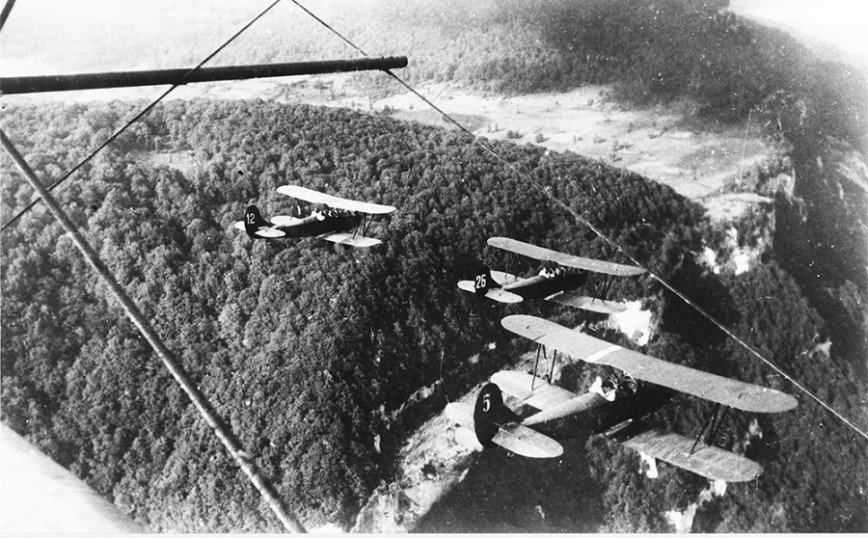
- On June 12, 1942, the first sortie of the regiment took place. Then it was the territory of the Salsky steppes. Then the regiment suffered its first losses.
- Until August 1942, the regiment fought on the rivers Mius, Don and in the suburbs of Stavropol.
- From August to December 1942 the regiment took part in the defense of Vladikavkaz.
- In January 1943, the regiment took part in breaking through the enemy’s defensive lines on the Terek River.
- From March to September 1943, the regiment’s pilots participated in breaking through the Blue Line defenses on the Taman Peninsula and liberating Novorossiysk.
- Air battles in the Kuban – from April to July 1943
- From November 1943 to 1944, the regiment participated in the Kerch-Eltigen landing operation and the Crimean offensive operation.
- In June-July 1944, the regiment fought in Belarus, helping to liberate Mogilev, Cherven, Minsk, Bialystok.
- From August 1944, the regiment operated on the territory of Poland, participated in the liberation of Augustow, Warsaw, Ostroleka.
- In January 1945, the regiment fought in East Prussia.
- In March 1945, the regiment’s guards took part in the liberation of Gdynia and Gdansk.
- In April 1945 and until the end of the war, the regiment assisted in breaking through enemy defenses on the Oder.
For three years of fighting, the regiment never left for reorganization.
Armament
The regiment was equipped with U-2 aircraft. When the regiment was formed, there were 20 aircraft, then their number increased to 45. At the end of the war, there were 36 combat aircraft in service.
Our training aircraft was not created for military operations. A wooden biplane with two open cockpits located one behind the other and dual controls for the pilot and navigator. (Before the war, pilots were trained on these machines). Without radio communications and armored backs capable of protecting the crew from bullets, with a low-power motor that could reach a maximum speed of 120 km / h. There was no bomb bay on the plane, the bombs were hung in bomb racks directly under the plane of the plane. There were no sights, we created them ourselves and called them PPR(easier than a steamed turnip ). The amount of bomb cargo varied from 100 to 300 kg. On average, we took 150-200 kg. But during the night the plane managed to make several sorties, and the total bomb load was comparable to that of a large bomber.
– I. V. Rakobolskaya, N. F. Kravtsova. We were called night witches
The control was dual: the aircraft could be controlled by both the pilot and the navigator. There were cases when navigators brought aircraft to the base and landed after the pilot died. Until August 1943, the pilots did not take parachutes with them, preferring to take another 20 kg of bombs instead.
Machine guns on aircraft also appeared only in 1944. Prior to this, the only weapons on board to protect against enemy fighters were TT pistols for pilots and navigators.
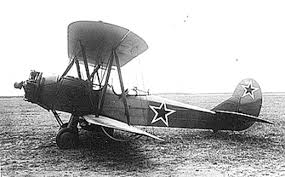
Po-2
Combat
The mass grave of female pilots of the 46th Taman Guards Women’s Aviation Regiment in the Sernovodsk region of Chechnya.
During the fighting, the pilots of the air regiment made 23,672 sorties. Of them:
- Battle for the Caucasus – 2920 sorties;
- liberation of Kuban, Taman, Novorossiysk – 4623 sorties;
- liberation of Crimea – 6140 sorties;
- liberation of Belarus – 400 sorties;
- liberation of Poland – 5421 flights;
- battle in Germany – 2000 sorties.
The breaks between flights were 5-8 minutes, sometimes the crew made 6-8 sorties per night in summer and 10-12 in winter. In total, the aircraft were in the air for 28,676 hours (1191 full days). The pilots dropped more than 3 thousand tons of bombs, 26,000 incendiary shells. The regiment destroyed and damaged 17 crossings, 9 railway trains, 2 railway stations, 26 warehouses, 12 fuel tanks, 176 vehicles, 86 firing points, 11 searchlights. 811 fires and 1092 high power explosions were caused. Also, 155 bags of ammunition and food were dropped to the encircled Soviet troops.
Composition of the regiment
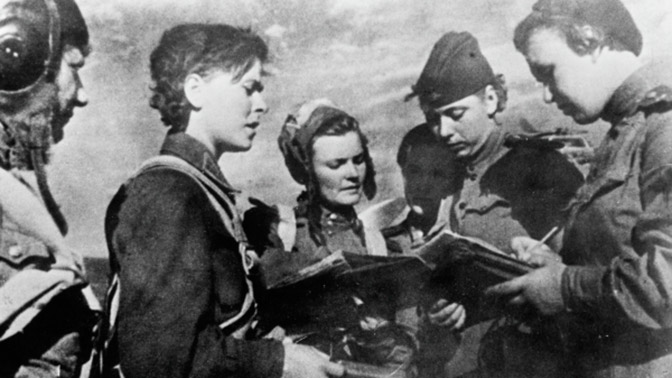
Night Witches
List of all who served in the 46th Guards Aviation Regiment
All military personnel of the regiment are sorted in the list by name.
| Job title | First Name Last Name |
| Regiment commander |
|
| Commissar, deputy regiment commander for political affairs |
|
| Deputy commander of the regiment for flight |
|
| Regimental Chief of Staff |
|
| Chief of Operations, Regimental Headquarters |
|
| Head of the Combat Department of the Regimental Headquarters |
|
| Head of the Encryption Department of the Regimental Headquarters |
|
| Head of Chemical Service |
|
| Head of Communications |
|
| Head of the Special Department |
|
| Party organizer of the regiment |
|
| Komsomol organizer of the regiment |
|
| Staff clerk |
|
| Headquarters typist |
|
| Regimental Commander’s Adjutant |
|
| Regiment doctor |
|
| Squadron Leader |
|
| Squadron Commissioner |
|
| Squadron Adjutant |
|
| Deputy Squadron Leader |
|
| Wing Commander |
|
| Pilot |
|
| Navigator of the regiment |
|
| Squadron navigator |
|
| Flight Navigator |
|
| Navigator |
|
| Senior engineer of the regiment |
|
| Squadron Chief Technician |
|
| Flight Technician |
|
| Mechanic |
|
| Regimental weapons engineer |
|
| Squadron Chief Weapons Technician |
|
| Weapons Master |
|
| Regiment engineer for special equipment |
|
| Special equipment technician |
|
| Hardware Master |
|
| Parachute stacker |
|
Losses
The irretrievable combat losses of the regiment amounted to 23 people and 28 aircraft. Despite the fact that the pilots died behind the front line, not one of them is considered missing. After the war, the commissar of the regiment, Evdokia Yakovlevna Rachkevich, used the money collected by the entire regiment, traveled to all the places where the planes died, and found the graves of all the dead.
The most tragic in the history of the regiment was the night of August 1, 1943, when four aircraft were lost at once. The German command, annoyed by the constant night bombing, transferred a group of night fighters to the regiment’s area of operations. This was a complete surprise for the Soviet pilots, who did not immediately understand why the enemy anti-aircraft artillery was inactive, but the planes caught fire one after another. When the understanding came that Messerschmitt Bf.110 night fighters were fired against them, the flights were stopped, but before that, the German ace pilot, who only in the morning became a holder of the Knight’s Cross of the Iron Cross, Josef Kociokmanaged to burn in the air together with the crews of three Soviet bombers, which did not have parachutes. Another bomber was lost due to anti-aircraft fire. That night died: Anna Vysotskaya with navigator Galina Dokutovich, Evgenia Krutova with navigator Elena Salikova, Valentina Polunina with navigator Glafira Kashirina, Sofya Rogova with navigator Evgenia Sukhorukova.
However, in addition to combat, there were other losses. So, on August 22, 1943, the communications chief of the regiment, Valentina Stupina, died of tuberculosis in the hospital. And on April 10, 1943, already at the airfield, one plane, landing in the dark, landed directly on another, which had just landed. As a result, the pilots Polina Makagon and Lydia Svistunova died immediately, Yulia Pashkova died from her injuries in the hospital. Only one pilot remained alive – Khiuaz Dospanova, who received severe injuries – her legs were broken. However, after several months of hospitals, the girl returned to service, although due to improperly fused bones, she became an invalid of the 2nd group.
Crews also died before being sent to the front, in accidents during training.
Awards
| Award (name) | Award date | Why received |
| Honorary title
” Guards “ |
Order of the NPO of the USSR No. 64 of February 8, 1943 | For the courage and heroism of the personnel, in battles with the German invaders. |
| honorary title
“Tamansky” |
Order of the Supreme High Command No. 31 of October 9, 1943 | for distinction in the battles for the liberation of the Taman Peninsula. |
| Order of the Red Banner | Decree of the Presidium of the USSR Armed Forces of April 24, 1944 | For the exemplary performance of command assignments in the battles for the liberation of the city of Feodosia and the valor and courage shown at the same time. |
| Order of Suvorov III degree | Decree of the Presidium of the USSR Armed Forces of April 5, 1945 | For the exemplary performance of command assignments in battles with the German invaders, for capturing the city of Kezlin and showing valor and courage. |
- More than 250 girls of the regiment were awarded orders and medals.
Heroes of the Soviet Union, Russia and Kazakhstan
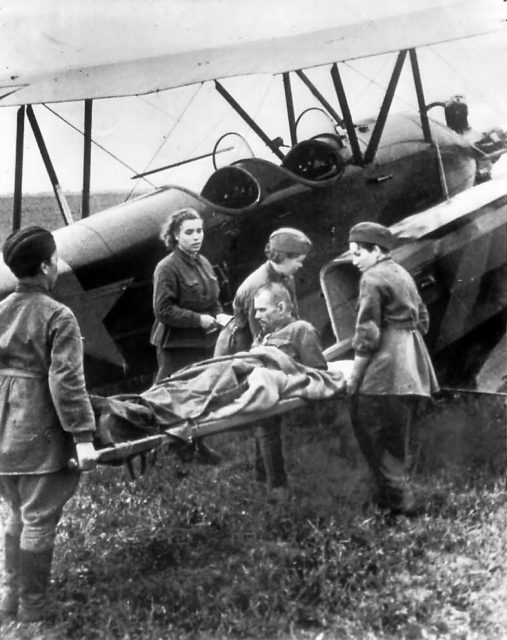
During the war years, 23 servicemen of the regiment were awarded the title Hero of the Soviet Union :
- Guards Art. Lieutenant Aronova Raisa Ermolaevna – 960 sorties. Awarded 15 May 1946.
- Guards Art. lieutenant Belik Vera Lukyanovna – 813 sorties. Awarded posthumously on February 23, 1945.
- Guards Art. Lieutenant Gasheva Rufina Sergeevna – 848 sorties. Awarded 23 February 1945.
- Guards Art. Lieutenant Gelman Polina Vladimirovna – 869 sorties. Awarded 15 May 1946.
- Guards Art. Lieutenant Zhigulenko Evgenia Andreevna – 968 sorties.
- Guards Art. Lieutenant Makarova Tatyana Petrovna – 628 sorties. Awarded posthumously.
- Guards Art. Lieutenant Meklin Natalya Fedorovna – 980 sorties. Awarded 23 February 1945.
- Guard Major Evdokia Andreevna Nikulina – 740 sorties. Awarded 26 October 1944.
- Guard Lieutenant Evdokia Ivanovna Nosal – 354 sorties. Awarded posthumously. The first female pilot awarded the title of Hero of the Soviet Union during the Great Patriotic War.
- Guards Art. Lieutenant Parfenova Zoya Ivanovna – 680 sorties. Awarded 18 August 1945. Participant in the Victory Parade.
- Guards Art. Lieutenant Pasko Evdokia Borisovna – 790 sorties.
- Guard Captain Popova Nadezhda Vasilievna – 852 sorties.
- Guards Art. Lieutenant Raspopova Nina Maksimovna – 805 sorties.
- Guard Captain Rozanova Larisa Nikolaevna – 793 sorties.
- Guards Art. Lieutenant Rudneva Evgenia Maksimovna – 645 sorties. Awarded posthumously.
- Guards Art. Lieutenant Ryabova Ekaterina Vasilievna – 890 sorties.
- Guard Captain Sanfirova Olga Alexandrovna – 630 sorties. Awarded posthumously.
- Guards Art. Lieutenant Sebrova Irina Fedorovna – 1004 sorties.
- Guard captain Smirnova Maria Vasilievna – 950 sorties.
- Guards Art. lieutenant Syrtlanova Maguba Huseynovna – 780 sorties. Awarded 15 May 1946.
- Guards Art. lieutenant Ulyanenko Nina Zakharovna – 915 sorties. Awarded 18 August 1945.
- Guards Art. Lieutenant Khudyakova Antonina Fedorovna – 926 sorties.
- Guard captain Chechneva Marina Pavlovna – 810 sorties. Awarded 15 May 1946.
In 1995, two more navigators of the regiment received the title of Hero of Russia :
- Guards Art. Lieutenant Akimova Alexandra Fedorovna – 680 sorties.
- Guards Art. Lieutenant Sumarokova Tatyana Nikolaevna – 809 sorties.
The title of ” People’s Hero ” (Kazakhstan) was awarded to one pilot:
- Guards Art. lieutenant Dospanova Khiuaz Kairovna – more than 300 sorties.
Gratitude of the Supreme Commander
The soldiers of the regiment as part of the 325th night bomber air division were thanked by the Supreme Commander-in-Chief:
- For distinction in battles during the breakthrough of the German defenses in the Mogilev direction and forcing the Pronya River west of the city of Mstislavl, during the occupation of the district center of the Mogilev region – the city of Chausy and the liberation of more than 200 other settlements, including Chernevka, Zhdanovichi, Khonkovichi, Budino, Vaskovichi, Temrivichi and Bordinichi.
- For the difference in battles during the mastery of the assault, they captured the large regional center of Belarus, the city of Mogilev – an operationally important center of German defense in the Minsk direction, as well as mastering the cities of Shklov and Bykhov with battles.
- For distinction in battles during the capture of the city and the large industrial center of Bialystok – an important railway junction and a powerful fortified German defense area covering the path to Warsaw.
- For distinction in battles during the storming of the city and fortress of Osovets , a powerful German fortified defense area on the Beaver River, covering the approaches to the borders of East Prussia.
- For distinction in battles during the capture of the city and the Lomza fortress – an important stronghold of the German defense on the Narew River.
- For distinction in battles during the storming of the city of Pshasnysh (Prasnysh), the city and fortress of Modlin(Novgeorgievsk)- important communications centers and strongholds of the German defense, as well as in the occupation of more than 1000 other settlements with battles.
- For distinction in the battles during the capture of the cities of Mlawa and Dzyaldov (Soldau) – important communications centers and strongholds of the German defense on the outskirts of the southern border of East Prussia and the city of Plonsk – a large communications hub and stronghold of the German defense on the right bank of the Vistula.
- For distinction in battles when entering the coast of the Baltic Sea and in capturing the city of Közlin – an important communications hub and a powerful stronghold of German defense on the routes from Danzig to Stettin, cutting off enemy troops in Eastern Pomerania from his troops in Western Pomerania.
- For distinction in battles during the capture of the city and the fortress of Grudziadz (Graudenz) – a powerful German defense center on the lower reaches of the Vistula River.
- For distinction in battles during the capture of the cities of Gniew(Mewe)and Starogard (Preussish Stargard) – important strongholds of the German defense on the outskirts of Danzig.
- For distinction in battles during the capture of the city of Stolp – an important junction of railways and highways and a powerful stronghold of the German defense in Northern Pomerania.
- For distinction in battles during the capture of the city and the naval base of Gdynia – an important naval base and a major port on the Baltic Sea.
- For distinction in battles during the capture of the city and fortress of Gdansk (Danzig) – the most important port and first-class naval base of the Germans on the Baltic Sea.
- For distinction in battles during the capture of the main city of Pomerania and the large seaport of Stettin, as well as the occupation of the cities of Hartz, Penkun, Kazekow, Schwedt.
- For distinction in battles during the capture of the cities of Greifswald, Treptow, Neustrelitz, Furstenberg, Gransee – important road junctions in the northwestern part of Pomerania and in Mecklenburg.
- For distinction in battles during the capture of the cities of Stralsund, Grimmen, Demmin, Malchin, Waren, Wesenberg – important road junctions and strong strongholds of the German defense.
- For distinction in battles during the capture of the city of Rostock and Warnemünde.
- For distinction in the battles during the defeat of the Berlin group of German troops by capturing the capital of Germany, the city of Berlin – the center of German imperialism and the center of German aggression.
- For distinction in battles during the capture of the cities of Barth, Bad Doberan, Neubukov, Barin, Wittenberg and the connection on May 3 with the allied English troops on the Wismar line, Wittenberg].
- For distinction in battles during the capture of the port and naval base of Swinemünde , a major port and naval base of the Germans on the Baltic Sea.
- For distinction in battles during the crossing of the Stralsunderfarwasser Strait and the capture of the island of Rügen.
Regiment in art
- In 1961, S. A. Aranovich made a documentary film about the female pilots of the regiment “One Thousand One Hundred Nights”.
- In 1981 at the film studio. M. Gorky, Yalta branch, Third creative association, a film was made: In the sky “Night Witches”, dedicated to the history of the regiment. The director and co-author of the film script was the former pilot of the regiment Evgenia Zhigulenko.
- In the film, only “old men” go into battle, the love storyline was based on the real story of the pilot of the 46th regiment of the Hero of the Soviet Union Nadezhda Popova and the pilot of the 821st fighter regiment of the Hero of the Soviet Union Semyon Kharlamov.
- In 1985, the artist Sergei Bocharov painted from nature a large canvas “A group portrait of female pilots – Heroes of the Soviet Union of the 46th Guards Night Bomber Aviation Taman Red Banner and Order of the Suvorov Regiment. Night witches”, oil on canvas 200×250 cm. It is in the collection of the Museum of Aviation and Cosmonautics in Moscow.
- After the end of the war, many of the girls wrote books and memoirs about their combat path.
- The Dutch rock band Hail of Bullets, who sing about World War II, dedicated one of their compositions to the Women’s 588th Air Regiment.
- Russian female metal band Aella dedicated the song “Night Witches” to the pilots of the regiment
- In 2014, the Swedish power metal band Sabaton dedicated the song “Night Witches” from the album ” Heroes ” to the pilots of the regiment, and by May 9, 2018, a cover of this song in Russian was released from the Radio Tapok project. In 2020, SABATON released an animated video Night Witches (Animated Story Video) about Night Witches.
- In 2008-2010, the French comic Le Grand Duc was published, the heroes of which are the pilots of the Night Witches regiment.
- In 2013, Channel One aired the series Night Swallows, dedicated to the pilots of the 46th Guards Regiment.
- In 2014, in Geneva, as part of the celebration of the 69th anniversary of the victory in the Great Patriotic War, the troupe of the theater “Theatre du Tunnel” (the first Russian theater based abroad) together with the Lomonosov International Center (the first Russian university in Europe) staged the play “In the Sky “Night Witches””, dedicated to the pilots of the 46th Guards Regiment. The stage director was the artistic director of the Theater du Tunnel, Valentin Valeryevich Stasyuk. The roles of fearless girls were performed by students of the International Educational Program of the ICL “Acting Arts” and the Boris Shchukin Theater Institute: Vladislav Ermolaeva, Ekaterina Khodyreva, Aksinya Oleinik, Natalya Svetlichnova, Daria Pisareva and Maria Kozlova.
- The American writer Mary Claire Bartlett dedicated the science fiction novel We Rule the Night (2019) to the “night witches”, where the pilots are bred as a detachment of “firebirds”.
- The Tatar writer Shamil Rakipov dedicated the novel Starry Nights to the female pilots of the regiment. The story is told on behalf of Maguba Syrtlanova, the former deputy squadron commander.
Memory
- On May 26, 1964, the Museum of Military Glory of the 46th Guards Night Light Bomber Taman Red Banner Order of the Suvorov Women’s Regiment was opened in Moscow ‘s secondary school No. 213 on May 26, 1964, which is still in operation. The exposition area is 47 m², on which there are 13 stands and showcases, as well as 4 tables. A library dedicated to the regiment has been assembled.
- The Museum of the 46th Guards Night Light Bomber Taman Red Banner Order of the Suvorov Women’s Regiment was created in Samara at school No. 105.
- A few months after the end of the war, the women’s regiment was disbanded, the girls returned to civilian life, many continued their interrupted studies. But their front-line friendship lives on to this day. Every year on May 2 and November 8 they meet in the square of the Bolshoi Theater in Moscow – this was decided at the last meeting of the regiment. During these meetings, former guards tell each other about their lives, successes and difficulties in their work. They remember both fighting girlfriends and the days of their anxious military youth.
- In 2012, the University Book publishing house published a collection of poems written by girls at the front. The compiler of the collection is the chief of staff of the regiment, retired lieutenant colonel, professor of the Department of Space Physics of the Faculty of Physics of Moscow State University – Irina Vyacheslavovna Rakobolskaya.
- The name of the 46th Guards Night Bomber Aviation Regiment bears the secondary school No. 182 of the city of Novosibirsk. Also in this school is a museum of the history and memory of this regiment.


